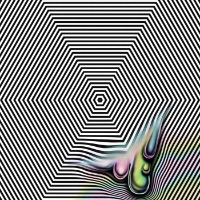- Digital
Giacinto Scelsi, Chris Watson & Joe Browning
Scelsi EP
SN Variations
- Cat No: SN2
- Release: 2016-03-04
- updated:
Track List
-
1. Giacinto Scelsi - Duo for Violin and Cello, Pt. 1
04:17 -
2. Giacinto Scelsi - Duo for Violin and Cello, Pt. 2
04:47 -
3. Chris Watson - Invertebrate Harmonics
06:26 -
4. Joe Browning - Honshirabe
03:59
24bit/44.1khz [wav/flac/aiff/alac/mp3]
SN Variations is proud to announce the release of a new EP curated around the primordial and enigmatic music of Giacinto Scelsi.
Alongside a new recording of his intimate Duo for Violin and Cello, the EP features a new work by Chris Watson inspired by Scelsi's explorations of 'pure sound' and a breathtaking shakuhachi honkyoku performance by Joe Browning.
Born into an aristocratic family in Italy in 1905, Scelsi's creative peak arrived in the 1960s after years of research into Buddhist chant and other aspects of Eastern spirituality. His work languished in obscurity for most of his long career, but its pioneering investigations of microtonality and pure sound have exerted a deep influence on contemporary composers and electronic artists including Mica Levi, Richard Skelton and Fennesz. Against the crowded polyphonies of much post-war academic modernism, Scelsi powerfully advocated for the primordial and the esoteric, for the acoustic interplay of pure frequencies.
The Duo for Violin and Cello dates from Scelsi's most fertile period and was composed at the same time as seminal works such as Anahit and Elegia per Ty. Despite a modest combination of just two instruments, the innovative use of double stopping and extended playing techniques creates a huge, vibrating microtonal form. In this new recording, Aisha Orazbayeva and Lucy Railton execute a meticulous performance of this complex score.
Chris Watson responded to the piece with sculpted field recordings of insects made originally on a boardwalk in the middle of the Borneo jungle. Invertebrate Harmonics imaginatively links the pure sound world of Scelsi to pure sound worlds found in nature. This piece is from a larger installation work Notes from a Forest Floor, which was played first at the ICA last June as part of the event 'MusICA -Exploring Sound and Authorship'.
Finally Chris records a traditional shakuhachi honkyoku piece - Honshirabe - one of the pieces forming the historic repertoire of the wandering Zen Buddhist monks known as the Komuso. This performance by Joe Browning is one of exquisite subtleties, resonating with Scelsi's mature work while pointing to its widespread historical antecedents.
Alongside a new recording of his intimate Duo for Violin and Cello, the EP features a new work by Chris Watson inspired by Scelsi's explorations of 'pure sound' and a breathtaking shakuhachi honkyoku performance by Joe Browning.
Born into an aristocratic family in Italy in 1905, Scelsi's creative peak arrived in the 1960s after years of research into Buddhist chant and other aspects of Eastern spirituality. His work languished in obscurity for most of his long career, but its pioneering investigations of microtonality and pure sound have exerted a deep influence on contemporary composers and electronic artists including Mica Levi, Richard Skelton and Fennesz. Against the crowded polyphonies of much post-war academic modernism, Scelsi powerfully advocated for the primordial and the esoteric, for the acoustic interplay of pure frequencies.
The Duo for Violin and Cello dates from Scelsi's most fertile period and was composed at the same time as seminal works such as Anahit and Elegia per Ty. Despite a modest combination of just two instruments, the innovative use of double stopping and extended playing techniques creates a huge, vibrating microtonal form. In this new recording, Aisha Orazbayeva and Lucy Railton execute a meticulous performance of this complex score.
Chris Watson responded to the piece with sculpted field recordings of insects made originally on a boardwalk in the middle of the Borneo jungle. Invertebrate Harmonics imaginatively links the pure sound world of Scelsi to pure sound worlds found in nature. This piece is from a larger installation work Notes from a Forest Floor, which was played first at the ICA last June as part of the event 'MusICA -Exploring Sound and Authorship'.
Finally Chris records a traditional shakuhachi honkyoku piece - Honshirabe - one of the pieces forming the historic repertoire of the wandering Zen Buddhist monks known as the Komuso. This performance by Joe Browning is one of exquisite subtleties, resonating with Scelsi's mature work while pointing to its widespread historical antecedents.



